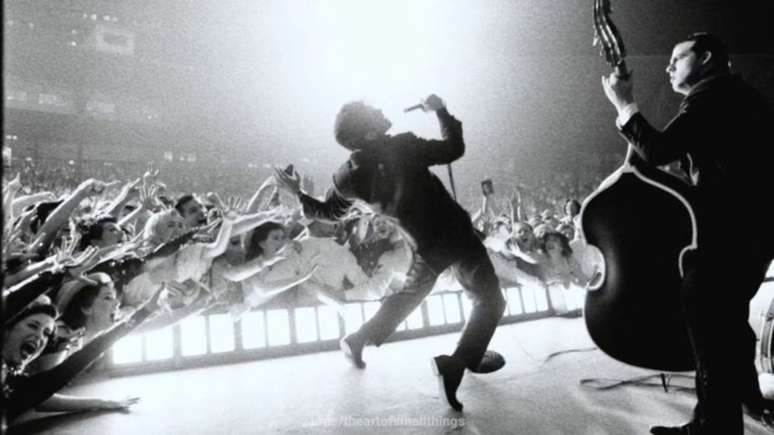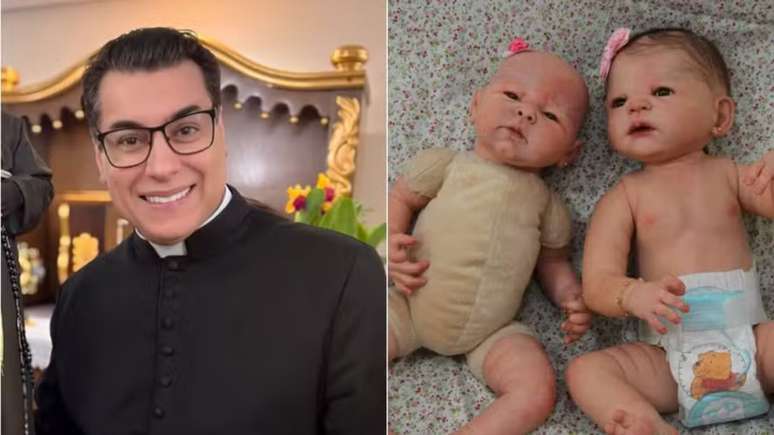‘Estadão’ spoke to Brazilian Beatles experts, who helped explain the story of the song released this Thursday (2), with John Lennon’s voice separated from the original recording with the help of artificial intelligence
Now and Then, the new Beatles song just released, shocks the listener for a simple reason: the most influential band of all time manages to reinvent itself despite its end having been announced more than fifty years ago.
It is true that the song written by John Lennon at the end of the 70s, and which has been circulating on the internet for years, does not reserve any great surprises for fans of the Liverpool quartet, but it is still capable of bringing tears to the eyes of the most suspicious Beatlemaniac . This is because the song 4:08 evokes a feeling of mourning, for the loss of John and George, and brings an atmosphere of magic: in 2023, the Beatles were able to reunite once again.
Two of Brazil’s leading Beatles experts gave their first impressions to the Estadao. The veteran Marco Antonio Mallagoli is the founder of the historic one Fan club of the revolution, created in 1979. He is one of the few Brazilians to have personally known John, Paul, George and Ringo. “From an artistic point of view, Occasionally it doesn’t add much to the Beatles’ career, because it’s flawless. I didn’t see much reason for this song to be released now, as it’s a well-known recording. But I thought the version was fantastic, and based on fan comments, I haven’t seen anyone who didn’t love this song,” says Marco.
Gilvan Moura, from Minas Gerais, owner of the channel The Beatles School, with more than 50 thousand subscribers on YouTube, recalls that the launch is very special for the fans, since there is an entire generation that has never seen a new song of the group . “It’s a gift that exceeds fans’ expectations. What I see is Paul’s attempt to say goodbye to the great artistic moment of his life. We’re talking about an 81-year-old man looking at the possibility of working with John Lennon plus a time. Occasionally it has a powerful force because of the translation, which can be “from time to time” and also “now and before” – “now” would be Paul and Ringo, and “before” would be John and George,” says Gilvan.
Before, now and after…
The story of Occasionally There are basically three steps. John recorded the demo on piano between 1977 and 1979 in his apartment in New York City and did not have time to work on it in the studio. He was murdered shortly afterwards and many speculate that the text was a tribute to Paul, as his last words to his former partner were: “Think of me sometimes, old friend”. Friend).
More than ten years after John’s death, the remaining members reunited in 1994 for the project Anthology, which celebrated the Beatles’ work with a three-volume collection, a book and a documentary. McCartney received some tapes from Yoko Ono which included, primarily, four home recordings of her late husband: the beautiful Free as the bird AND True love they were completed by Paul, George, Ringo and producer Jeff Lyne. Already Grow old with mewhich had appeared on John’s posthumous album, was promptly ignored. Occasionallyin turn, it was hit by a strong buzz on the tape, impossible to remove with the equipment of the time, and was also rejected – being classified by George as “rubbish”.
Nearly thirty years later, a certain New Zealand director is responsible for none other than the trilogy of Lord of the Rings he managed to give a new meaning to the film Let it be (1970) with the glorious version Take up again (2021), produced in three parts for Disney+. The innovative technology used by Peter Jackson in the documentary allowed him to isolate specific instruments and sounds to compose the montage. Soon, the same trick was used to extract John’s voice from the breathy recording of Now and Then.
This new possibility is revolutionary and opens a new horizon not only for the Beatles, but for the music industry in general. The technique was used in the album’s remix Revolvers (1966) and in collections 1962-1966 AND 1967-1970which will be relaunched in November with Occasionally inserted.
- Watch the short film that tells the story of Now and Then:
How the song came to life
OccasionallyAbove all, it is an archaeological work. John’s voice stands out and gains breadth thanks to the intensity of the rhythm section. Paul reworks the piano from the original recording and adds a bass line that serves the purpose of the melody. He also reinforces the guitar foundation left by George, when the song was quickly worked out in the ’90s, with a concise slide guitar solo that the late guitarist would have approved (as happened in Financial advisorFor example).
Ringo uses a direct rhythm, without frills or flashy fills. There’s also a melancholic string arrangement that would make the late producer George Martin smile, not only because of the orchestra’s brilliant performance, but because his son Giles was responsible for producing the song along with Paul.
Giles used extracts from Here, there and everywhere, WhyAND Eleanor Rigby to put together the three-part harmony that only John, Paul and George could do. The idea initially made McCartney nervous, as it was a sort of historical reenactment, but he liked the end result. This, however, was the only “unnatural” aspect of the piece, given that the use of the practice of virtual imitations called “artificial intelligence” is not foreseen.
End?
It’s hard to believe the marketing behind “the last Beatles song”, given that there is previously unreleased material in the Apple archives. The experimental act Carnival of Light, over 10 minutes long, has been the focus of fan lust for decades. And in the documentary itself take up again, there are recordings of songs never finished by the band, such as Just funTConnecting thoughtsamong others.
Paul, at 81, and Ringo, at 83, can even vouch for it Occasionally be the final point in the history of the Beatles. But who’s to say that his children and John and George’s heirs agree?
Source: Terra
Earl Johnson is a music writer at Gossipify, known for his in-depth analysis and unique perspective on the industry. A graduate of USC with a degree in Music, he brings years of experience and passion to his writing. He covers the latest releases and trends, always on the lookout for the next big thing in music.







